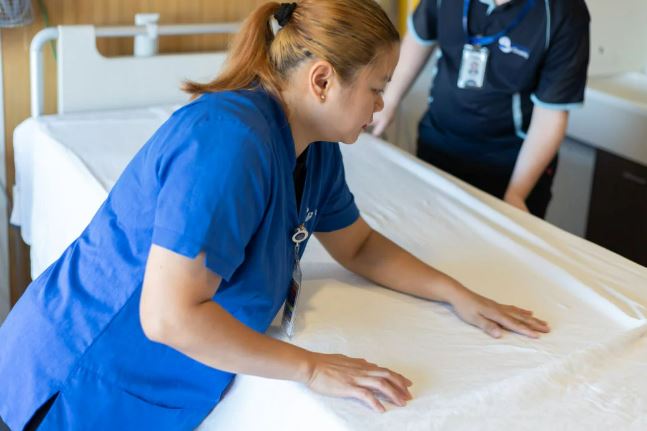Hospital cleaning plays a critical role in ensuring patient safety and maintaining a healthy environment conducive to healing. The cleanliness of healthcare facilities directly impacts infection control, patient outcomes, and overall operational efficiency.
Introduction
Cleanliness in hospitals is not merely about aesthetic appeal; it is a fundamental component of healthcare quality. The stakes are high in medical environments where patients with compromised immune systems and vulnerable conditions are treated. Effective hospital cleaning protocols are designed not only to eliminate visible dirt but also to eradicate harmful pathogens that can cause infections. This proactive approach significantly reduces the risk of healthcare-associated infections (HAIs) and supports patient recovery.
Types of Hospital Cleaning
- Daily Cleaning: Routine cleaning tasks performed daily to maintain cleanliness in patient rooms, corridors, waiting areas, and common spaces.
- Terminal Cleaning: Deep cleaning of patient rooms and equipment after a patient is discharged or transferred, focusing on thorough disinfection to prepare the room for the next occupant.
- Operating Room Cleaning: Specialized cleaning protocols before and after surgical procedures to prevent surgical site infections and maintain sterile conditions.
- Isolation Room Cleaning: Cleaning protocols specific to isolation rooms where patients with contagious diseases are treated to prevent the spread of infections.
- High-Touch Surface Cleaning: Regular cleaning and disinfection of frequently touched surfaces such as doorknobs, light switches, and handrails to minimize the transmission of pathogens.
Benefits of Effective Hospital Cleaning
- Reduction of Infections: Proper cleaning and disinfection protocols reduce the risk of HAIs, which can lead to complications and extended hospital stays.
- Enhanced Patient Safety: A clean environment supports patient safety by minimizing exposure to harmful pathogens and allergens.
- Improved Patient Experience: Clean and well-maintained surroundings contribute to patient comfort and satisfaction during their hospital stay.
- Compliance with Standards: Adherence to rigorous cleaning standards ensures regulatory compliance and accreditation requirements for healthcare facilities.
- Operational Efficiency: Efficient cleaning practices contribute to the smooth operation of healthcare facilities by reducing downtime and turnover times for patient rooms.
FAQs about Hospital Cleaning
1. How often should hospital rooms be cleaned?
Hospital rooms should undergo daily cleaning and disinfection, with terminal cleaning performed after each patient discharge or transfer.
2. What cleaning agents are used in hospitals?
Hospitals use EPA-approved disinfectants and cleaning agents that are effective against a wide range of pathogens, including bacteria and viruses.
3. How does hospital cleaning contribute to infection control?
By eliminating pathogens from surfaces, hospital cleaning reduces the risk of cross-contamination and transmission of infections among patients and healthcare workers.
4. What are the challenges in hospital cleaning?
Challenges include the need for thorough training of cleaning staff, ensuring compliance with cleaning protocols, and managing cleaning tasks in high-traffic areas.
5. How can patients contribute to cleanliness in hospitals?
Patients can contribute by practicing good hand hygiene, following infection prevention guidelines, and alerting healthcare staff to any concerns about cleanliness.
Conclusion
In conclusion, hospital cleaning is indispensable for patient safety, infection control, and maintaining high standards of healthcare delivery. Clean hospitals not only promote healing but also inspire confidence in patients and their families. At Holy Cross Services, we recognize the crucial role of cleanliness in healthcare settings. Our commitment to excellence in hospital cleaning reflects our dedication to providing a safe and supportive environment for patients and staff alike. By prioritizing cleanliness and implementing robust cleaning protocols, healthcare facilities can enhance patient outcomes and uphold their mission of delivering quality care.




.jpg)

Comments